The Ancient Minoan Palace Of Knossos
The ancient Minoan Palace of Knossos (also known as the Palace of Minos, named as such after the legendary King Minos from Greek mythology) is a beautiful archaeological site in Heraklion, the most populous city on Crete, the largest island of Greece. The Palace of Knossos was the royal residence of the kings of the ancient Minoan civilisation, the first civilisation to have emerged in Europe during the Bronze Age. The Minoans were an influential and mysterious civilisation. Their historical, cultural, religious/mythological, artistic, and architectural legacy influenced the Mycenaeans (i.e. the mainland Ancient Greeks) who subsequently took over the island of Crete in the wake of multiple cataclysms which shattered the Minoan civilisation over the passage of time and destroyed their complex palatial system. By extension, it can be said that the historical legacy and influence of the Minoans also influenced the Ancient Greeks and, indirectly, even the Romans. The Minoans were in turn initially influenced by the civilisation of ancient Egypt, a civilisation with which they traded for a long time as part of their extensive network of maritime trade routes which stretched far and wide across the Mediterranean and Aegean seas. Therefore, they also traded with Cyprus and the Levant in the process and are nowadays perceived as a predominantly peaceful civilisation. However, many mysteries concerning their civilisation and way of life still remain unsolved to this day… In point of fact, even the very term Minoan(s) is an artificial linguistic construction by Sir Arthur Evans (made up in connection to the legendary King Minos) as we still don’t know exactly how this particular Aegean or Mediterranean Bronze Age culture referred to itself; however, we do know how the Ancient Egyptians referred to themselves and that is ‘Keftiu’.
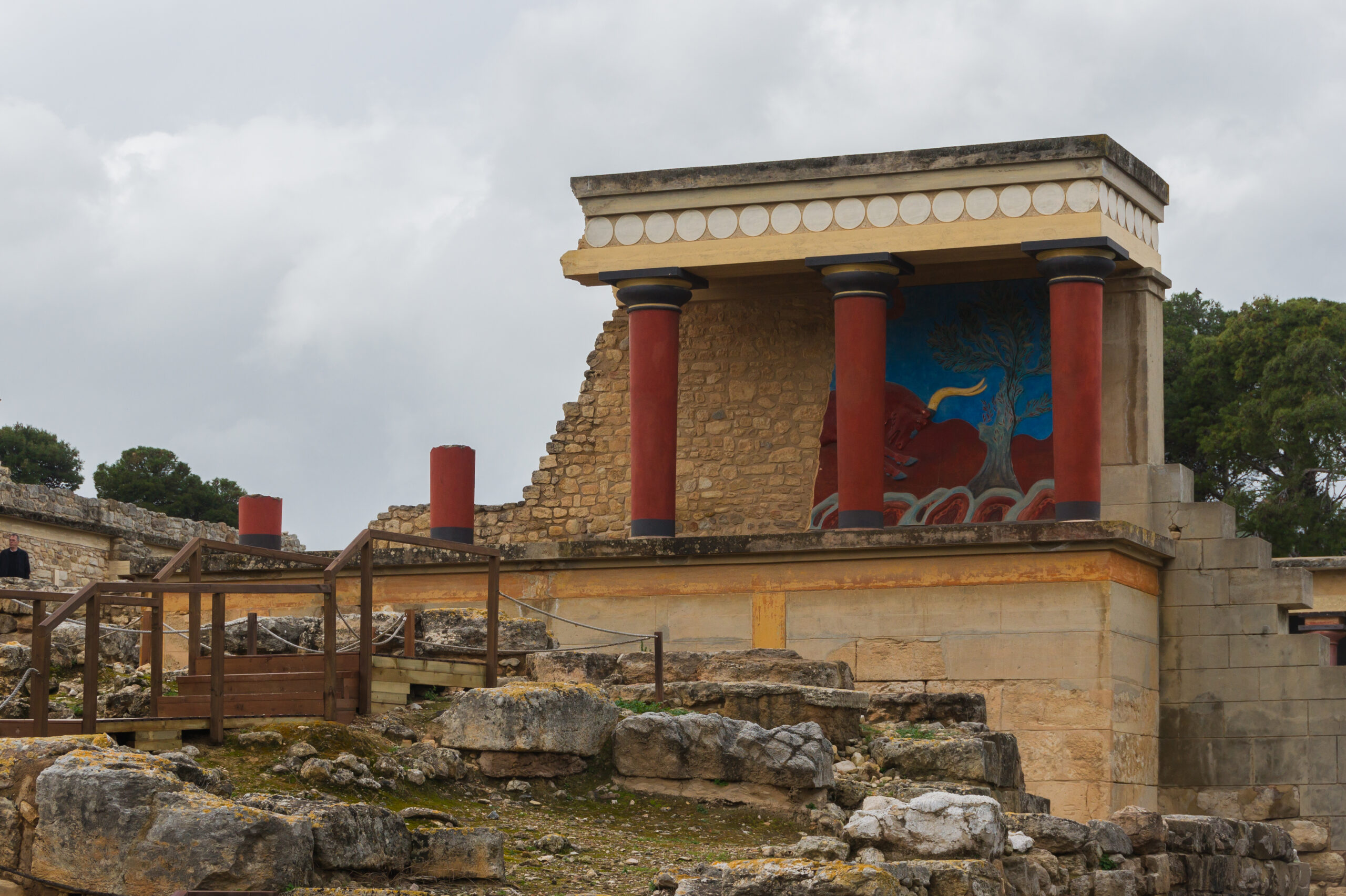
The famous North Entrance of the Palace of Knossos with the well-known bull fresco behind the three columns. Image source: Wikimedia Commons (author: Wikimedia Commons user Jebulon)
The Minoans, although previously thought to be a non-Indo-European people who spoke a non-Indo-European language (a language isolate recorded initially using the Cretan hieroglyphs and then Linear A, the precursor of Linear B, the script of the ancient Greek language), are the descendants of Neolithic farmers, according to modern genetic tests and analyses, making them related to Neolithic populations from Northern-, Western-, and Southern Europe and not to other populations from Ancient Egypt, Libya, or the Middle East (as it was previously believed by prominent British archaeologist Sir Arthur Evans).
The beautiful Palace of Knossos, adorned with mesmerising frescoes which were reconstructed in the past by Swiss artist Émile Gilliéron, was excavated by British archaeologists Sir Arthur Evans (from England) and Duncan Mackenzie (from Scotland) starting in 1900 and continuing at the round of the 20th century. The palace itself was rediscovered by Minos Kalokairinos, a Cretan antiquarian and businessman, way back in 1877/1878, more than two decades prior to Sir Arthur Evans.
The Palace of Knossos was not only the royal center of the bygone Minoan civilisation but it is often considered the oldest city in Europe as well. In addition, the Throne Room of the palace contains the oldest throne room in Europe. Nonetheless, Knossos was more of an administrative and religious centre rather than a mere royal residence.
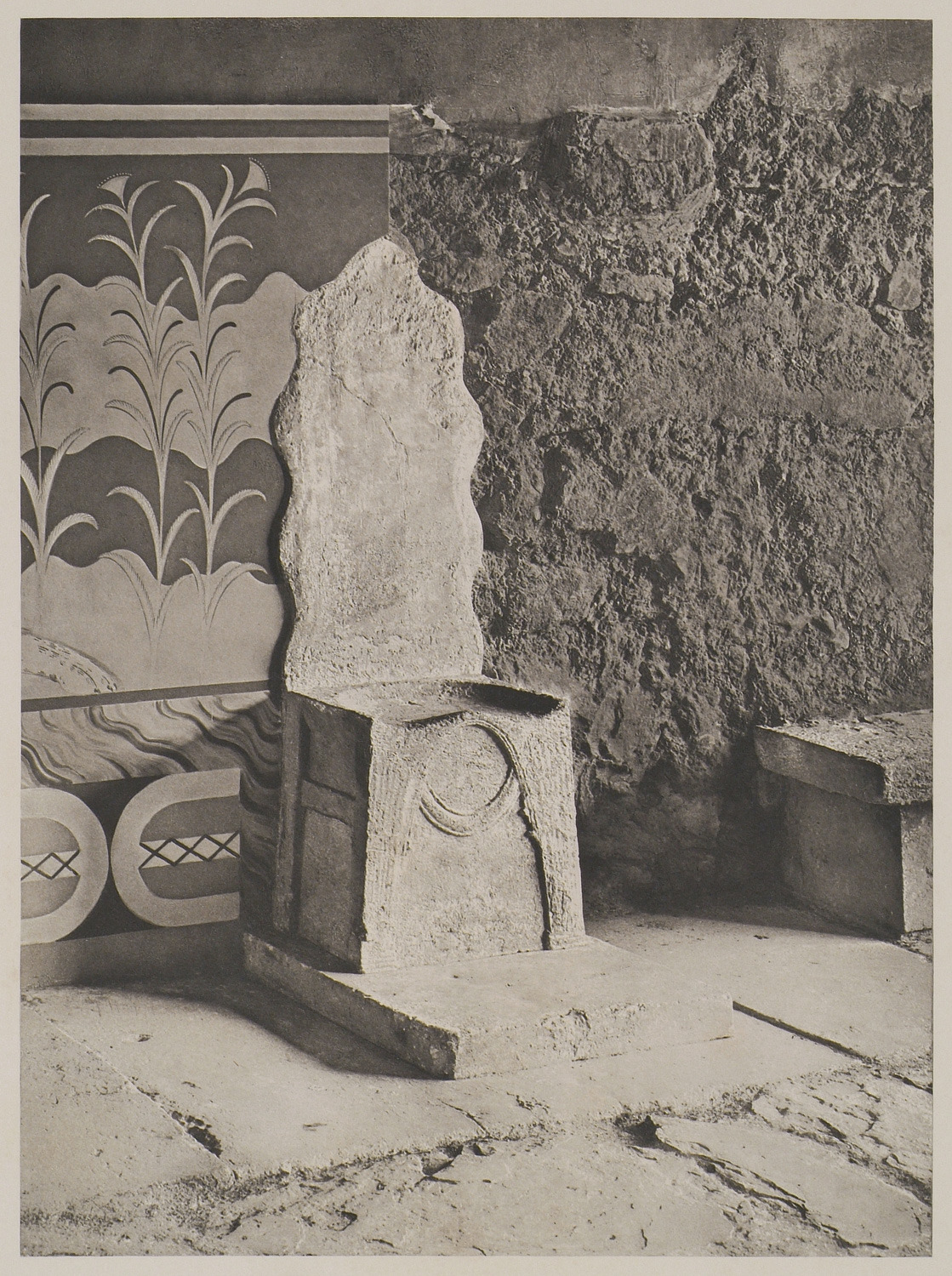
The Throne Room of the ancient Minoan Palace of Knossos with what is often considered the oldest throne in Europe. Image source: Wikimedia Commons (author: Frederic Boissonnas)
2025 is a special year for the study of the Minoan civilisation given the fact that the Palace of Knossos was at long last designated World Heritage Site by UNESCO (as part of the larger group of Minoan Palatial Centres, that is).
In Greek mythology, the Palace of Knossos is associated with the myth of the minotaur (a half-bull, half-human monster) and the Athenian hero Theseus who was helped by the daughter of the legendary King Minos, Ariadne, and her thread across the labyrinth in which the creature lived. Spoiler alert here (excuse me for this): the Athenian hero Theseus ultimately defeats the Minotaur in the labyrinth and escapes from the maze aided by beautiful Ariadne, whom he doesn’t marry (leaving her on the island of Naxos where Dionysus married her instead)…
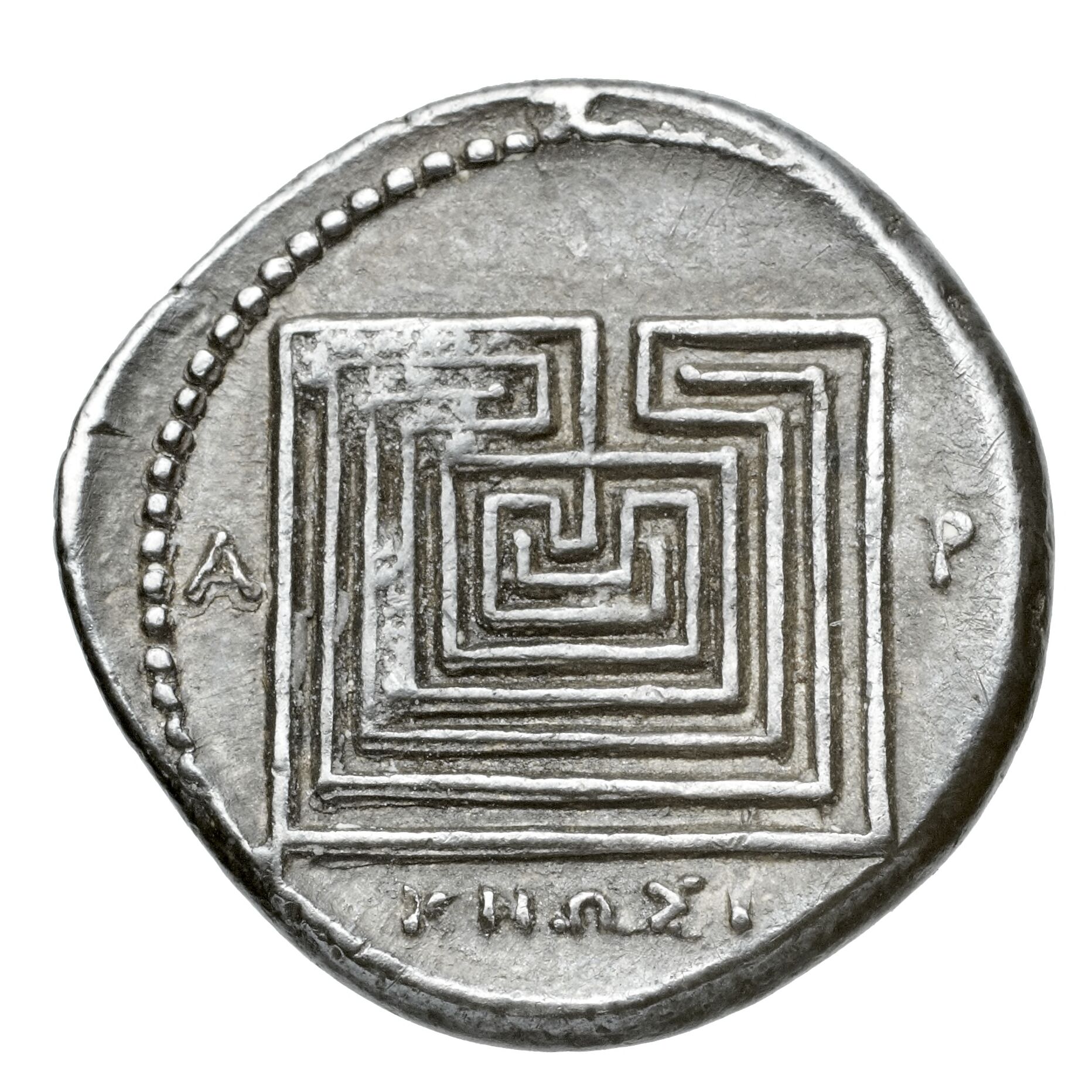
A coin found in Knossos depicting a labyrinth. The Palace of Knossos is associated with the myth of minotaur and the Athenian hero Theseus (part of the collection of Bibliothèque nationale de France). Image source: Wikimedia Commons
Back to the palace itself, its North Entrance is perhaps the most well-known visual attraction. The North Entrance of the Palace of Knossos features the famous bull fresco as well. In popular culture, the North Entrance was depicted on the frontal cover artwork of American progressive metal band Giant Squid’s 2014 concept studio album titled Minoans. A significant number of archaeological finds were unearthed in the past on the site of the Palace of Knossos, among which are a series of pithos (singularly known as pihoi), large storing jars containing olives, wine, or grains.
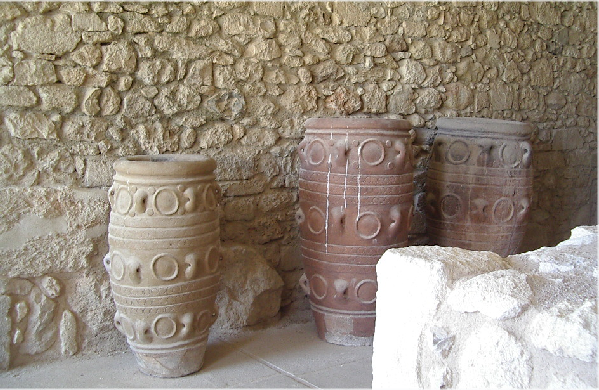
Storing jars discovered in Knossos, Heraklion, Crete, Greece. These jars are known as pithoi (singular form pithos). Image source: Wikimedia Commons
The palace (part of a complex palatial system) had a water and drainage system (which also included a latrine or bathroom) as well as paved roads which connected it to other nearby palaces and harbours on Crete. Within the palace, tourists can admire various masterpieces of Minoan art, namely colourful and vibrant frescoes depicting nature and human life. Below you can take a look at some of the most beautiful, colourful, and vibrant frescoes of Minoan art which were discovered in Knossos:
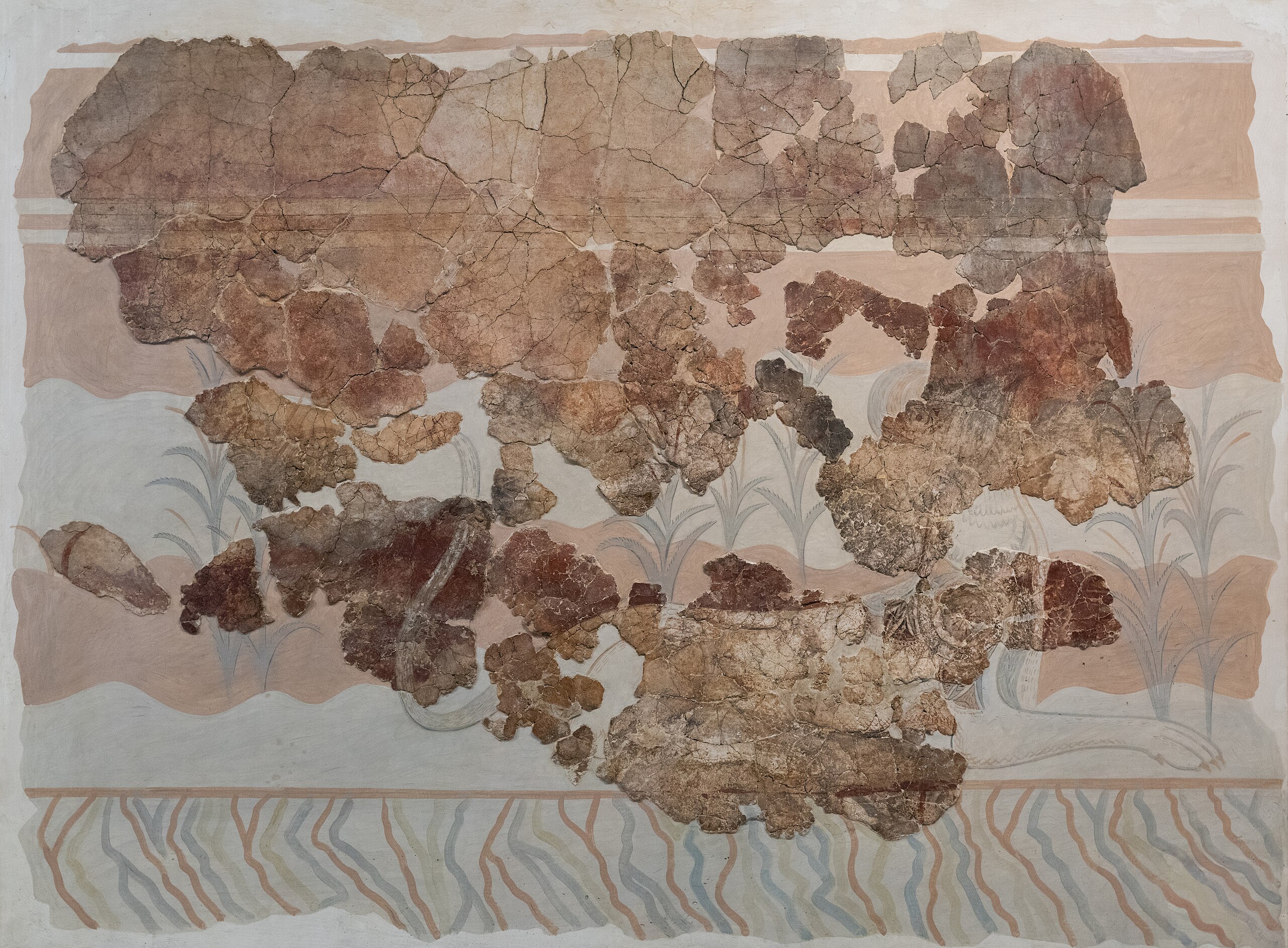
Grass fresco from the Throne Room of the ancient Minoan Palace of Knossos. Image source: Wikimedia Commons (author: Wikimedia Commons user Gsimonov)

Fresco depicting blue monkeys. Image source: Wikimedia Commons (author: Wikimedia Commons user Gsimonov)
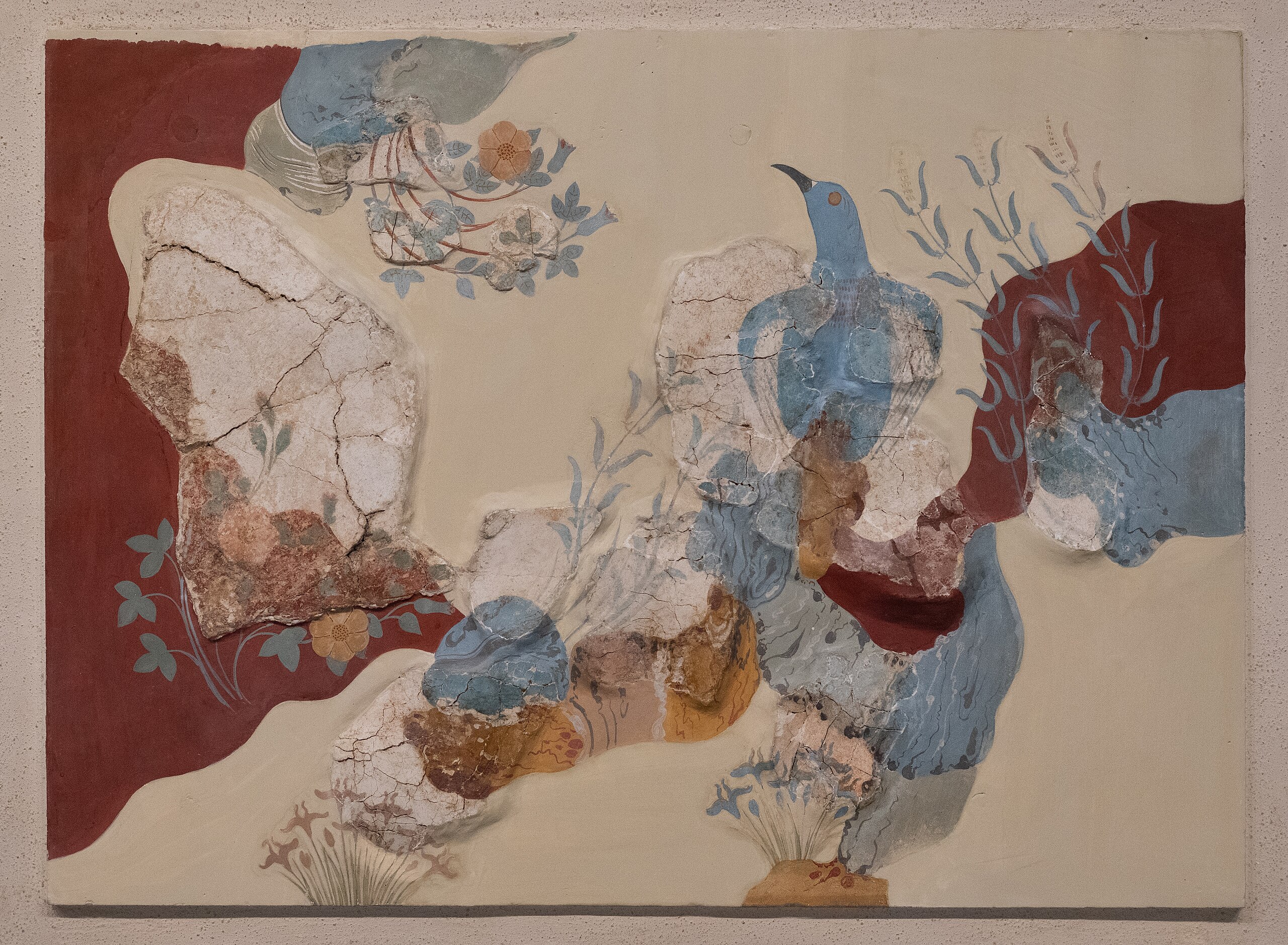
Fresco depicting blue birds. Image source: Wikimedia Commons (author: Wikimedia Commons user Gsimonov)

The Grandstand fresco. Image source: Wikimedia Commons (author: Wikimedia Commons user Gsimonov)
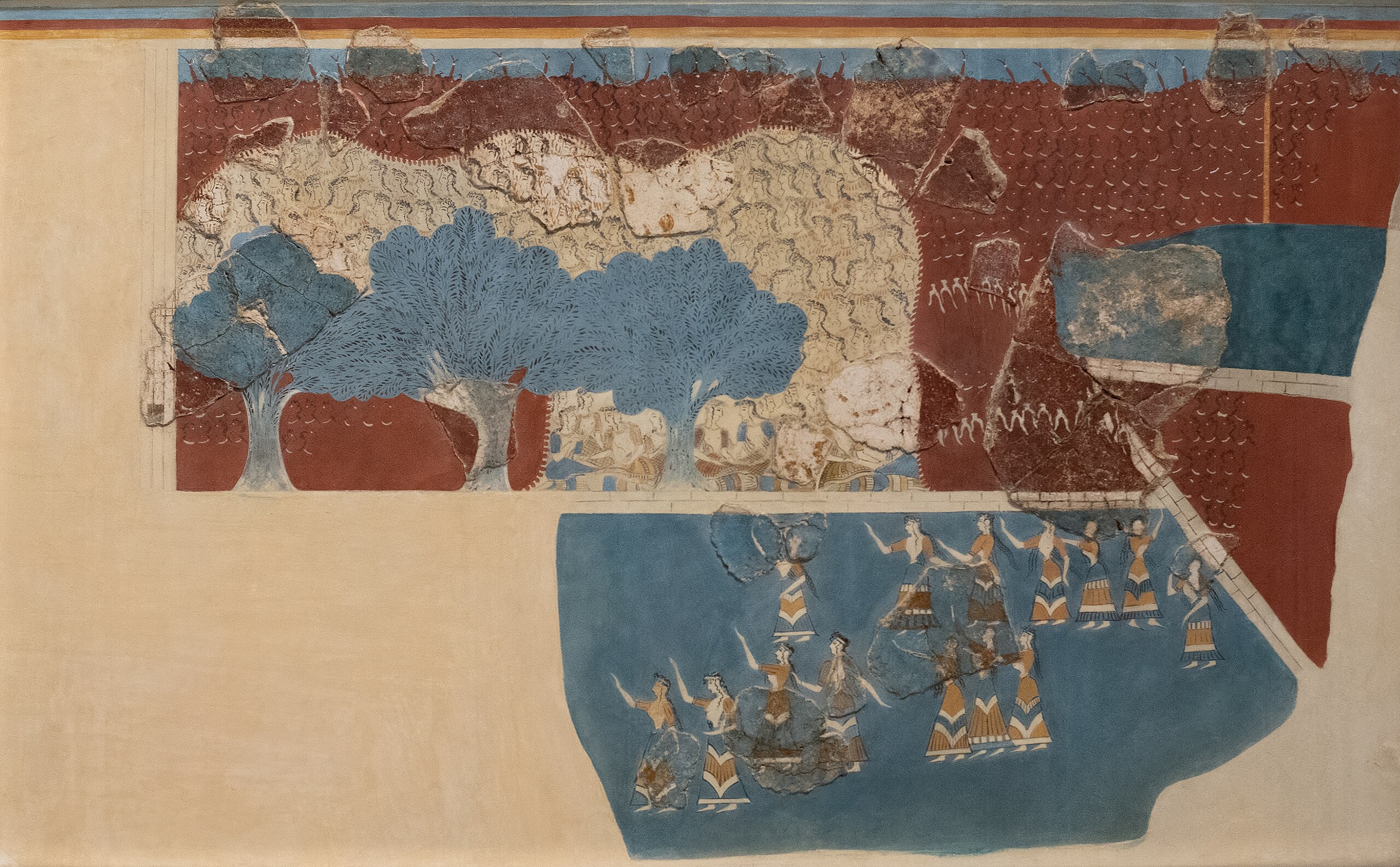
The sacred grove fresco. Image source: Wikimedia Commons (author: Wikimedia Commons user Gsimonov)
Documentation sources and external links:
- DNA analysis unearths origins of Minoans, the first major European civilization by Stephanie Seiler on www.washington.edu (the website of the University of Washington)
- The Discovery of Knossos by the Cretan Antiquarian Minos Kalokairinos, Politics and Research Agendas in the Early Days of Aegean Archaeology by Antonis Kotsonas, Assistant Professor of Mediterranean History on www.isaw.nyu.edu (New York University, Institute for the Study of the Ancient World)
- DNA reveals origin of Greece’s ancient Minoan culture on www.bbc.com
- Minoan Civilization Originated in Europe, Not Egypt by Ewen Callaway & Nature Magazine on www.scientificamerican.com
- Knossos on www.wikipedia.org (in English)
- Knossos on www.britannica.com (Encyclopædia Britannica online)
- 10 interesting facts about this beautiful palace on www.knossospalacetickets.com

